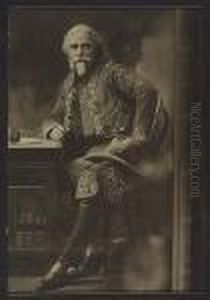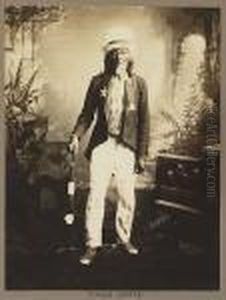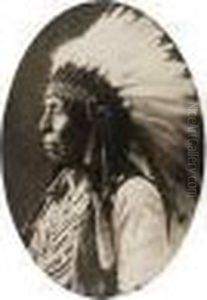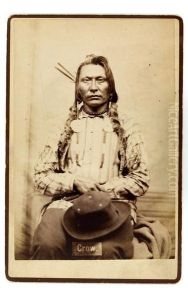David F. Barry Paintings
David Francis Barry, born in 1854 in upstate New York, was an American photographer most renowned for his portraits of Native American personalities and scenes from the American West during the late 19th and early 20th centuries. His work provides a significant historical record of the Plains Indians and their way of life during a period of great change and upheaval.
Barry began his photographic career as an apprentice under Orlando Scott Goff in Bismarck, Dakota Territory, in the early 1870s. Goff, a notable photographer of the time, introduced Barry to the world of photography, and it was under his mentorship that Barry developed his skills and interest in photographing the Native American people and their cultures. Barry eventually established his own studio and became known for his ability to capture the dignity and personality of his subjects, which included famous figures such as Sitting Bull, Rain-in-the-Face, Gall, and Chief Joseph.
Throughout his career, Barry traveled extensively across the American West, often visiting and living among the tribes he photographed. His images were not just portraits but also included scenes of everyday life, cultural rituals, and the changing landscape of the American frontier. Barry's photographs are valued not only for their artistic quality but also for their historical significance, offering insights into the lives of Native American peoples during a time of great transition.
Barry's work was widely recognized during his lifetime, and he exhibited his photographs in the United States and Europe. Despite facing the challenges of a changing America and the decline of the frontier that had so inspired him, Barry continued to photograph and document the West until his death in 1934. Today, his photographs are held in numerous collections and museums, serving as a poignant reminder of the past and as an invaluable resource for understanding the history and culture of Native American peoples.
David F. Barry's legacy is that of a pioneering photographer whose work captured the complexity and beauty of a vanishing world. His photographs not only preserve the visages of historical figures but also serve as a record of the encounters between different cultures at a pivotal moment in American history.



